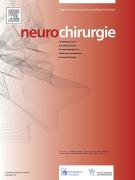How ultrasonography can contribute to diagnosis of craniosynostosis - 05/11/19

| pages | 4 |
| Iconographies | 4 |
| Vidéos | 0 |
| Autres | 0 |
Abstract |
Introduction |
The aim of this article was to provide an overview of ultrasound (US) techniques for the investigation of cranial sutures in infants.
Material and methods |
We first describe a high-resolution sonography technique and its limitations. We then analyze the reliability, effectiveness and role of ultrasonography in routine practice using a PubMed literature review.
Results |
Ten studies reported excellent correlations between ultrasonography and 3D-CT. Cranial US for the diagnosis of a closed suture had 100% sensitivity in 8 studies and 86–100% specificity before the age of 12 months. Negative findings mean imaging investigation can be stopped. If ultrasonography confirms diagnosis, neurosurgical consultation is required. Thus, 3D-CT can be postponed until appropriate before surgery.
Conclusion |
Cranial suture ultrasound is an effective and reliable technique for the diagnosis of craniosynostosis. It has many advantages: it is fast and non-irradiating, and no sedation is required. It should be used as first-line imaging in infants below the age of 8–12 months when craniosynostosis is clinically suspected.
Le texte complet de cet article est disponible en PDF.Keywords : Craniosynostosis, Suture, Infant, Ultrasound, Skull
Plan
Vol 65 - N° 5
P. 228-231 - novembre 2019 Retour au numéroBienvenue sur EM-consulte, la référence des professionnels de santé.
L’accès au texte intégral de cet article nécessite un abonnement.
Bienvenue sur EM-consulte, la référence des professionnels de santé.
L’achat d’article à l’unité est indisponible à l’heure actuelle.
Déjà abonné à cette revue ?

